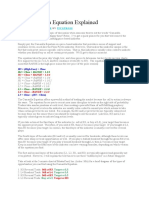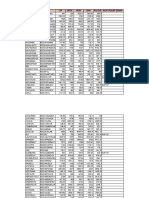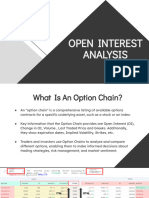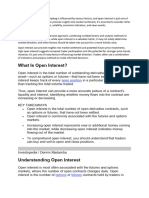0% found this document useful (0 votes)
260 views17 pagesMetaverse Ebook OFA+OI
The document discusses order flow and open interest, including their definitions, mechanics, and importance for traders. Order flow provides insights into market dynamics, sentiment, and potential price movements. Open interest measures the number of outstanding futures and options contracts that have not been settled or closed.
Uploaded by
alphahacker8920Copyright
© © All Rights Reserved
We take content rights seriously. If you suspect this is your content, claim it here.
Available Formats
Download as PDF, TXT or read online on Scribd
0% found this document useful (0 votes)
260 views17 pagesMetaverse Ebook OFA+OI
The document discusses order flow and open interest, including their definitions, mechanics, and importance for traders. Order flow provides insights into market dynamics, sentiment, and potential price movements. Open interest measures the number of outstanding futures and options contracts that have not been settled or closed.
Uploaded by
alphahacker8920Copyright
© © All Rights Reserved
We take content rights seriously. If you suspect this is your content, claim it here.
Available Formats
Download as PDF, TXT or read online on Scribd
/ 17



























































